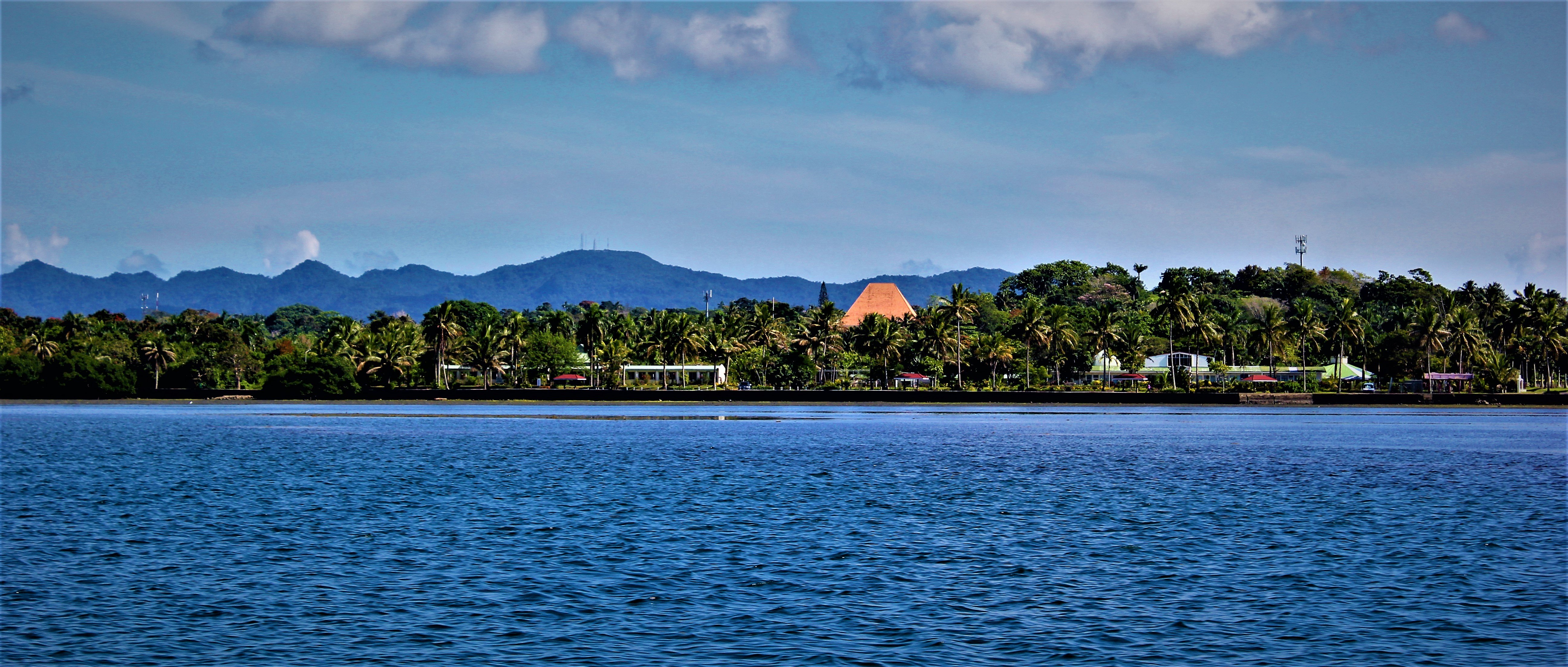Sharks that are alive and healthy in Fiji's oceans are worth a great deal of money to Fiji's economy. In 2012, the Pew Foundation calculated that shark diving alone generated US$42.2 million for Fiji's economy
Unfortunately, the unnecessary killing of sharks, whether intentional or as a result of an accidental bycatch, removes this opportunity and has adverse effects on marine ecosystems and Fiji’s tourism industry. It is vital, therefore, to provide protection for shark nurseries, and ensure Fiji has effective fisheries laws and initiatives for shark protection that are implemented.
Early this year, dead baby sharks hit the headlines when around 10 juvenile hammerhead sharks were found dumped in a culvert near Suva. These endangered animals may have been caught illegally in nets set across a nearby river mouth where scientists at the Marine School, USP have undertaken a detailed and celebrated study and found a significant and important breeding ground.
Fortunately, the newly created Inshore Fisheries Management Division (IFMD) within the Ministry of Fisheries is currently looking to strengthen a variety of fisheries laws and regulations and their implementation including, but not limited to, the laws that protect sharks. In this bulletin, we consider the existing relevant laws on netting around rivers and discuss additional measures to ensure that sharks are better protected. We also briefly consider other initiatives that are currently being led by the IFMD to make Fiji's inshore fisheries more sustainable for the benefit of all Fijians. For more information regarding other shark conservation measures in Fiji, please see our previous bulletin: “A Legal Policy Discussion of Shark Conservation in Fiji”.
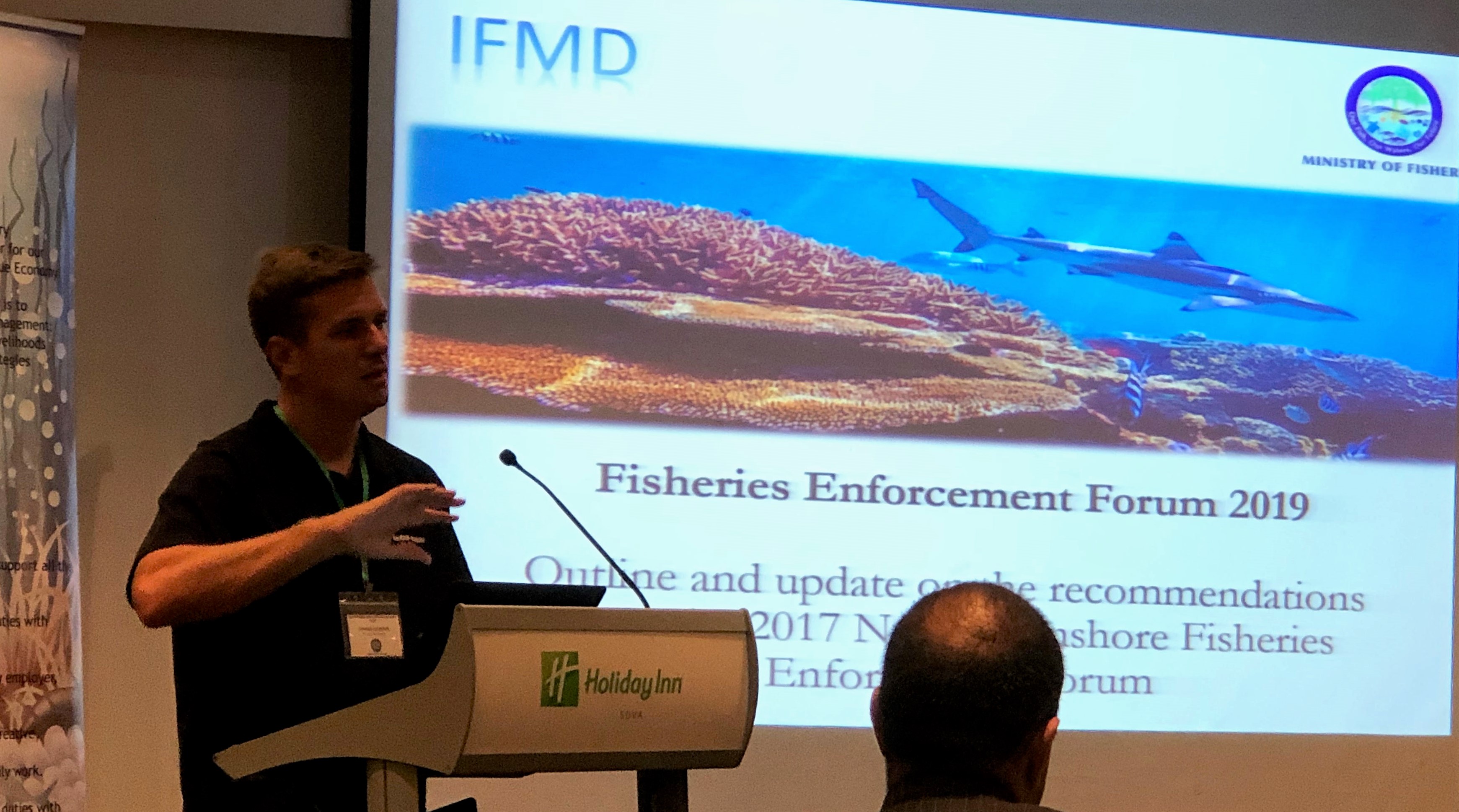
A scientific study conducted by leading marine scientists Amandine Marie, Celso Cawich, Tom Vierus, Susanna Piovano and Ciro Rico of USP and Cara Miller presented empirical evidence for the existence of a Scalloped Hammerhead Shark (SHS, Sphyrna lewini) nursery in the Rewa Delta in Fiji.
This study focused on developing a more detailed understanding of the reproductive biology and critical habitat of the SHS in the Rewa Delta.
Amongst other things, the research suggested that good information regarding shark species’ biology, ecology and habitat use is essential for developing sustainable management plans. Such information includes:
- coastal sharks species being known to aggregate at discrete sites
- the tendency of some sharks to return to their birthplace to breed (including the scalloped hammerhead, Sphyrna lewini) making nursing areas critical habitats
- the expectation that newborn sharks of coastal shark species use more sheltered areas to reduce their vulnerability to predation and compensate for their limited foraging skills.
Taking those factors into consideration, the researchers recommended the following in order of importance:
- Complete ban of gillnet fishing in the Rewa Delta throughout the year
- Partial ban of gillnet fishing in the Rewa Delta from sunset to sunrise throughout the year
- Partial ban of gillnet fishing in the Rewa Delta from sunset to sunrise during the parturition period (October-April)
- Partial ban of gillnet fishing in the Rewa Delta from sunset to sunrise during the peak of the parturition period (December-March).
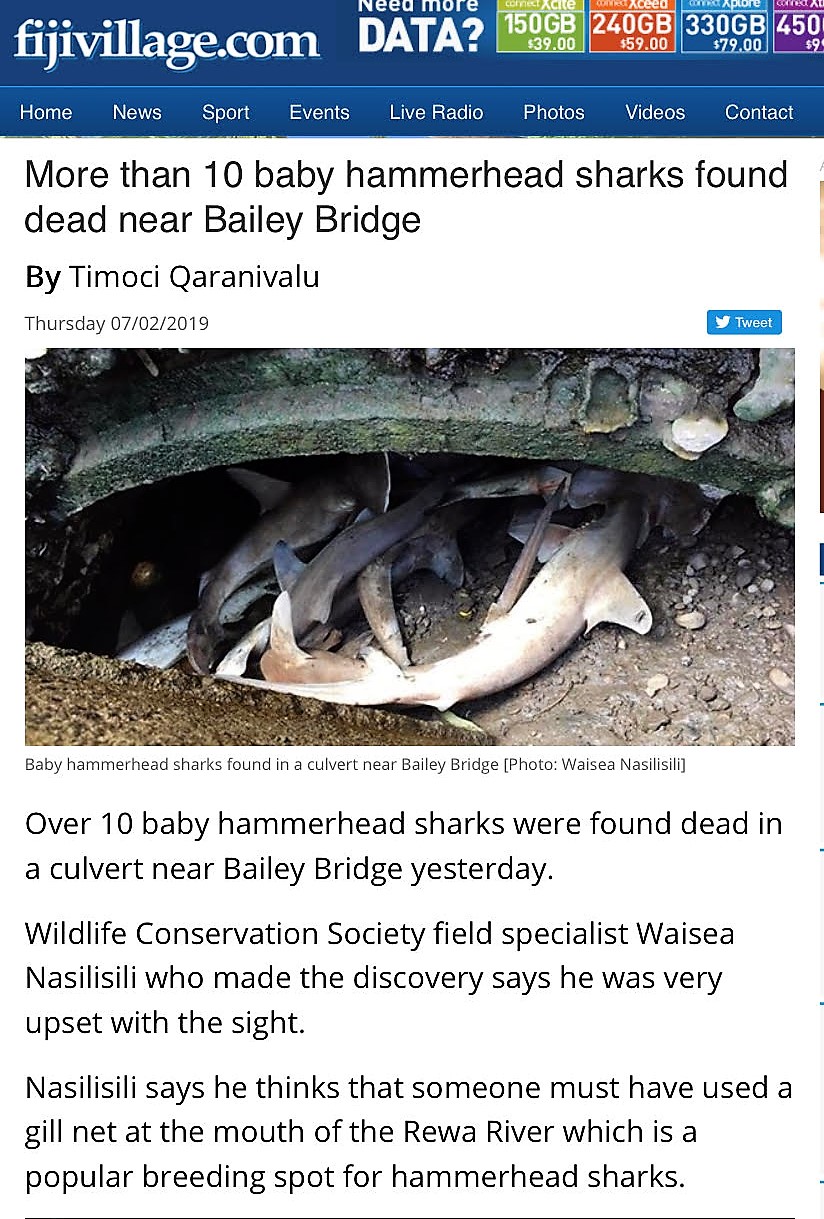
Despite these recommendations, the significance of sharks to Fiji's economy and the importance of the breeding ground in the Rewa Delta, as the report above shows more than 10 baby sharks were recently found dumped near the Bailey Bridge in Suva. The killing of these animals removed them from Fiji's marine environment and removed the opportunity that they provided to Fiji's economy in the future. It is likely that these baby sharks were dumped because the person who caught them was aware that they could not be sold as they are protected animals in accordance with the Endangered and Protected Species Act, as amended.
However, what does the law say about netting around rivers?
The United Nations Law of the Sea Convention (LOSC) provides an internationally agreed framework for oceans governance and amongst other things recognises that Fiji has the supreme authority (sovereignty) to make laws over all its internal waters (rivers), its archipelagic waters (Fiji is one of 22 States globally to be blessed with archipelagic waters) and a 12 nautical mile territorial sea that extends from where its archipelagic waters end. In accordance with LOSC Fiji has enacted relevant legislation to assert its sovereignty over these large areas of ocean and this provides Fiji with authority to govern its coastal fisheries and protect species that are important to its economy or for other reasons like food security. For this reason, Fiji may create, implement and enforce strict rules to regulate fishing in rivers, its archipelagic waters or within its territorial sea.
Currently fishing using nets in Fiji fisheries waters (which includes internal waters) is regulated through the Fisheries Act, 1941 ("Fisheries Act") and the Offshore Fisheries Management Act, 2012 ("Offshore Fisheries Management Act") along with their respective Regulations.
The Fisheries Act and Regulations refer to several tools used in fisheries management. These include fish size limits, the species of fish that may not be caught and the methods or gear used in fishing. In relation to the methods or gear used in fishing, the Fisheries Act prescribes limits to mesh sizes to allow for smaller fish to escape unharmed. For the different types of nets used in Fiji’s fisheries waters, Regulations 3 to 16 outline minimum mesh sizes which are measured when the net is wet and stretched and include the following:
° Bukiyami net obtained with prior written permission of the Director and hand nets may be of any size;
° 30 millimetres for cast nets and nets for the purpose of catching sardines and whitebait;
° 75 millimetres for wading nets, gill nets and of all nets not specifically mentioned in the Regulations, however if the gill net has been obtained from the Ministry of Fisheries and is used only for catching garfish (busa), then the minimum mesh size is 30 millimetres.
Apart from setting minimum mesh sizes for nets, Fisheries Regulations made pursuant to the Fisheries Act also prohibit the use of fishing nets in certain locations. For example, regulation 7 forbids fishing in the estuary (area where freshwater of a river or stream meets the ocean) of a river or stream or within 100 metres of a river mouth or stream using any net apart from hand nets, wading nets and cast nets. This means that fishing with a gillnet at or 100 metres from a river mouth is illegal in Fiji.
Of course, in terms of the baby hammerhead sharks that were dumped, it is not known where or how they were caught, or who caught them. This means at the present time, it is not known whether they were caught illegally and shows one of the many challenges that exist for enforcement officers within the Ministry of Fisheries.
Pursuant to the Offshore Fisheries Management Act, section 25(5)(6), it is an offence to engage or assist in any driftnet fishing activities in Fiji fisheries waters. For the purposes of this Act:
° “Fiji fisheries waters” includes internal waters;
° “driftnet fishing” includes the attempt to catch or the catching of fish using a driftnet; and
° “driftnet” means a gillnet or other net which is more than 2.5 kilometres in length, the purpose of which is to enmesh, entrap or entangle fish.
The use of a gillnet in rivers may (depending on whether it meets the definition of a "driftnet") be an offence and upon conviction, the offender is liable to a fine not less than $5,000 and not more than $100,000 and/or imprisonment for a term not exceeding 6 months.
Furthermore, the Offshore Fisheries Management Regulations, 2014 prohibits the use of certain types of fishing gear and methods. This includes the use of driftnet fishing gear in Fiji fisheries waters, with the fixed penalty of $10,000 applicable for a natural person and $20,000 for a corporation or other entity.
All of the above means that at present the act of capturing the juvenile and endangered sharks may or may not have been illegal depending on where and how they were captured. The Fisheries Act is also quite out of date and this in itself leads to general confusion regarding the use of nets close to shore that indiscriminately remove juvenile fish stocks. Given the importance of sharks and other marine species to Fiji economy and for reasons of food security, there are many who will naturally conclude that this situation is not, at present, ideal.
However, the Ministry of Fisheries and in particular its new division the IFMD under the leadership of Mr. Richard Veeran, is looking at this area, and other areas of Fisheries Laws and determining how to strengthen Fiji's legislation and how to implement better legal protection for important coastal marine species, including, but not limited to sharks who may rely on Fiji's inshore waters and rivers to breed. Given Fiji's absolute sovereignty in these areas of ocean, Fiji certainly has the ability to introduce such legislation in accordance with existing legislation or via new regulations or legislation.
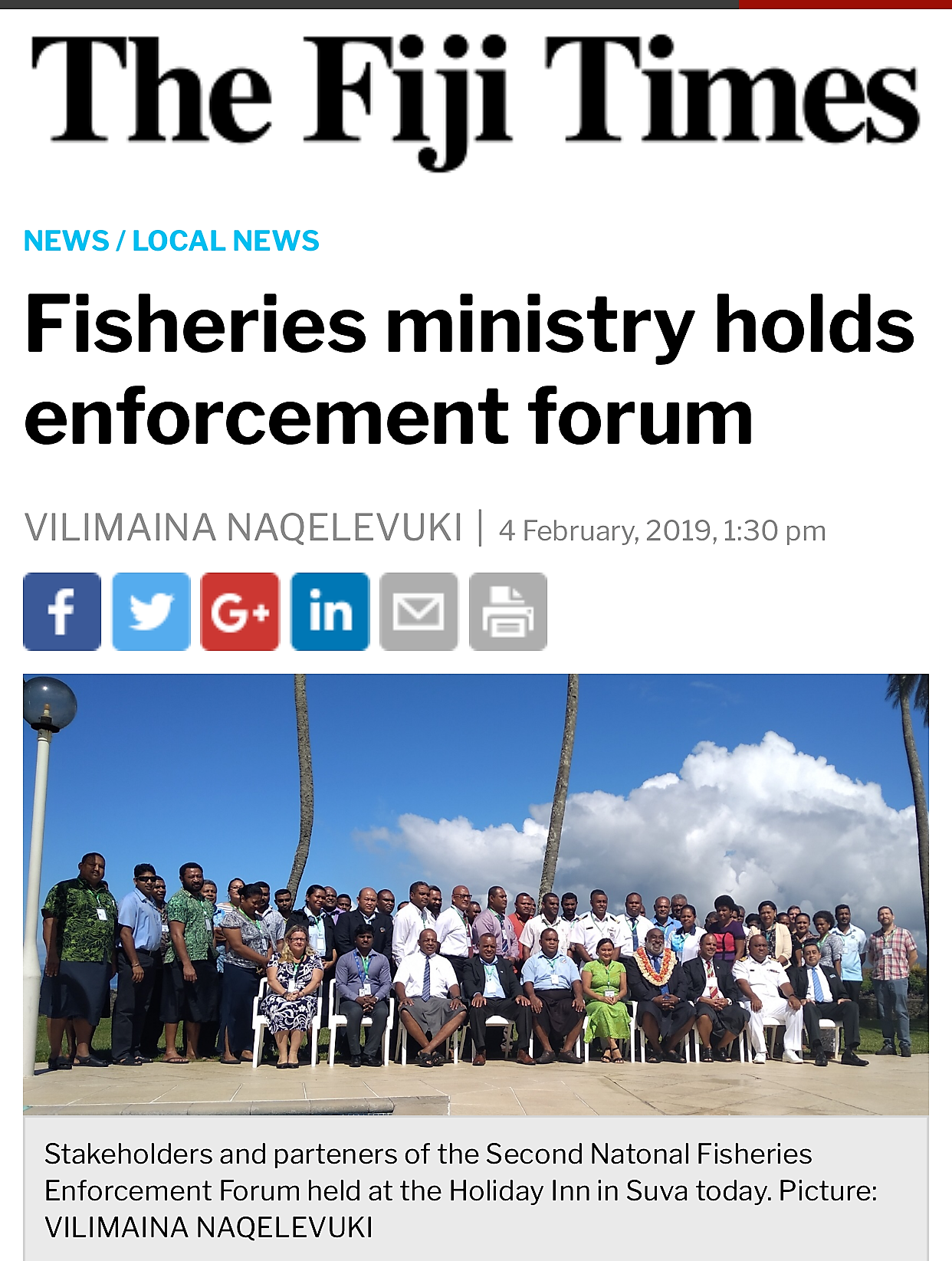
The Ministry of Fisheries - and the IFMD are leading the way
The Ministry of Fisheries is leading the way to develop and implement new coastal fisheries legislation to both benefit Fiji's economy and to make Fiji's fisheries more sustainable.
For example, the IFMD is developing new laws and regulations to:
- regulate the commercial, sustainable and safe harvest of beche de mer (sea cucumbers) that play a vital role in Fiji's inshore marine eco-systems
- regulate the capture of sharks to provide more legal protection for them
- regulate seasonal bans of Fiji's most important eating fish during their breeding months
- increase the minimum size limits of some inshore fisheries species that may be caught.
However, even with perfect laws in place (which is not the case at the moment), implementing and enforcing fisheries legislation is a challenging endeavour for a number of technical, evidentiary and practical reasons. Fiji's Fisheries waters cover enormous areas of ocean, include traditional fishing grounds and require resources and expertise to monitor and control. Inter-agency cooperation among enforcement agencies is also crucial, and in early February, 2019, the Ministry of Fisheries hosted Fiji's second National Inshore Fisheries Enforcement Forum and this was attended by a host of other relevant government agencies with the purpose of collaborating to share and improve the regulation of Fiji's inshore fisheries laws.
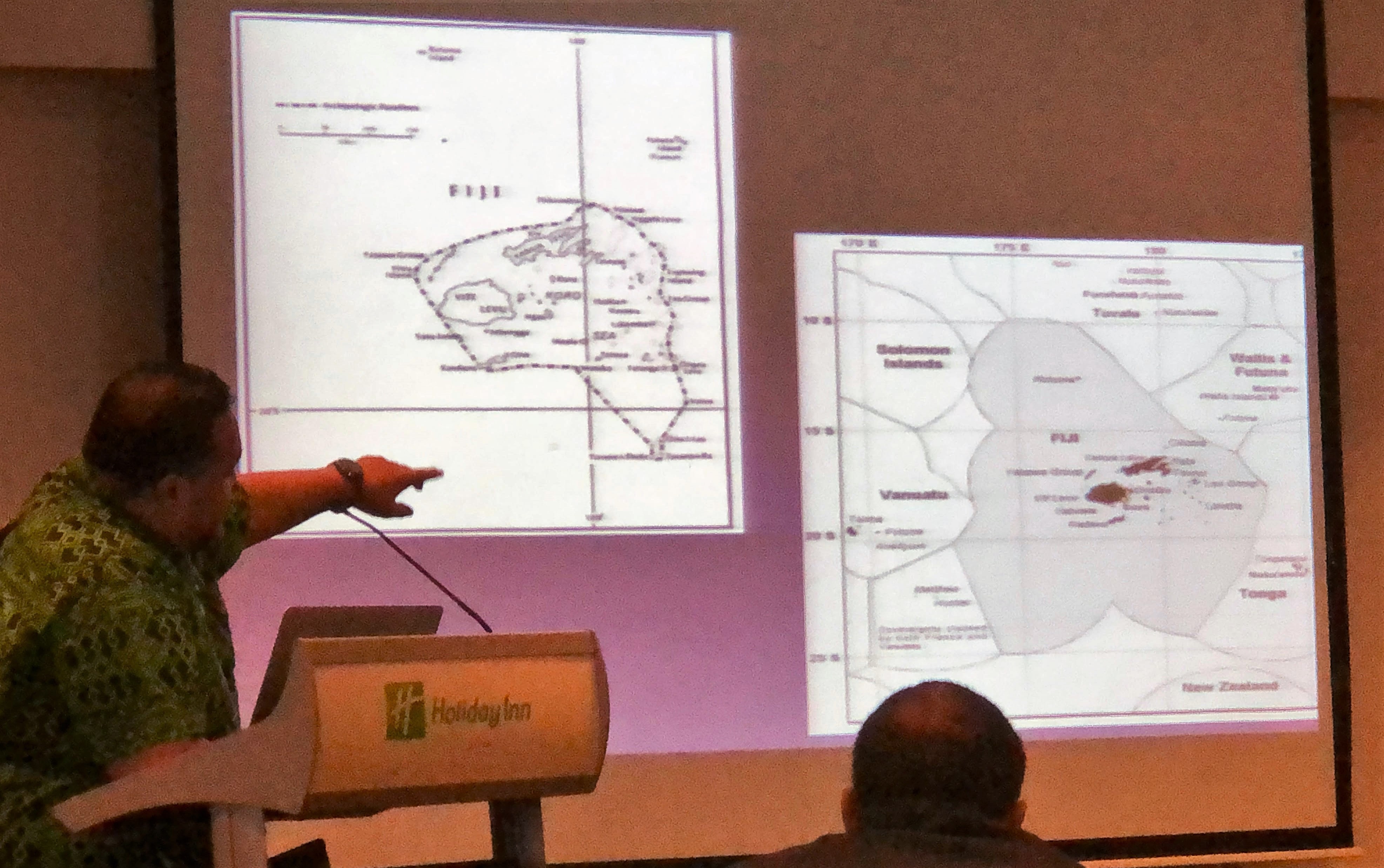
A fisheries officer from the Ministry of Fisheries explains the limits of Fiji's jurisdiction to regulate fisheries in Fiji's Fisheries waters
And finally - a note about the reasons for the changes to the legislation, the importance of consultation and - fish sizes
While the current initiatives to make Fiji's fisheries more sustainable are welcomed, it is also important to increase awareness of the science upon which many of the decisions are being made. An increased awareness of the science amongst Fiji's general population, and knowledge of the reasons for the changes will increase compliance and understanding amongst the people who rely on fishing and like to buy fish. It is clear from the involvement of municipal markets, like the Nausori market officials in the National Inshore Fisheries Enforcement Forum, as well as the success and reach of the 4FJ campaign where pledges are made not to eat certain species during their breeding season that there is a genuine interest in making Fiji's inshore fisheries more sustainable for the benefit of all.
It is likely that in the near future, new fisheries regulations will be introduced that increase the minimum sizes of the important inshore fisheries species that may be caught and sold. The reason behind these increases is simple, it is to enable the fish to breed before they are caught.
However, at the other end of the scale, there are good scientific reasons to regulate the maximum size of fish that may be caught to discourage the capture and killing of the big fish that are still out there.
This is because science is showing that the fish that spawn the most are the largest ones, and hence these mature fish that may be decades old are incredibly important for the future of Fiji's fisheries.
So while, fish like the one caught below represent impressive catches, it may be that in future fisher folk will be encouraged to let the bigger ones get away.
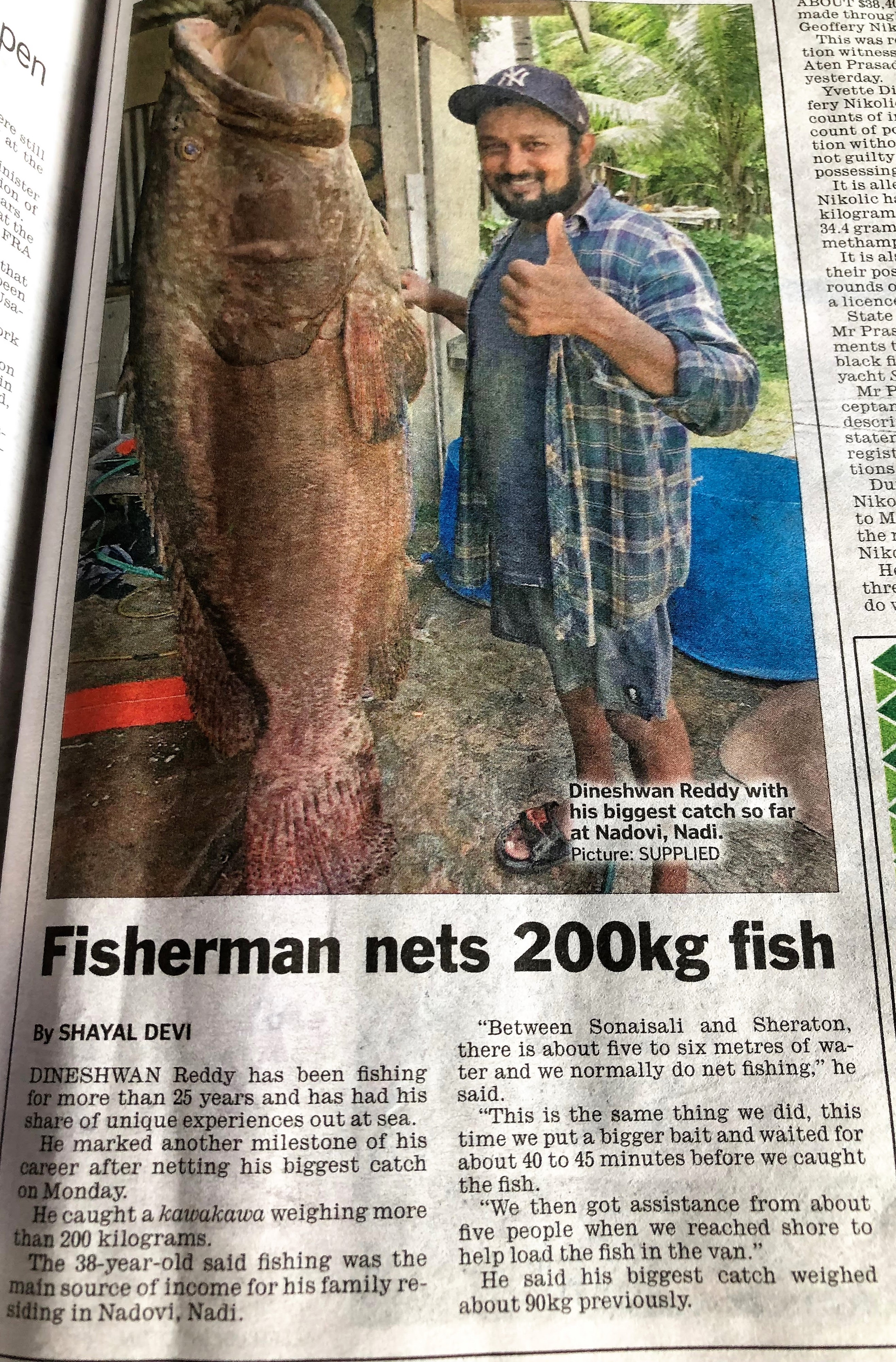
This legal bulletin is not, and should not be relied upon as, legal advice - it is provided for general information purposes only


